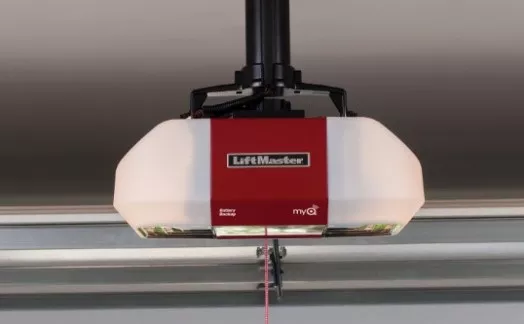
We take a lot of gadgets for granted in our lives. However, the garage door opener is probably one of the most commonly overlooked devices in the modern world. We depend on it every day to open and close the garage door as we go to work and return home, but have you ever really explored how these devices work?
We’ll explore some of the basics that will help you understand your garage door better then next time you press that open button. It might actually give you a better appreciation of and respect for your garage door opener, as well.
The Different Types of Openers
Most of us have central garage door openers, meaning that there is a motor mounted to the ceiling of the garage, attached to a trolley, that then attaches to the center of the garage door. However, this is not the only style out there. In fact, it’s an older option, and it’s beginning to be phased out in favor of other styles. One new style that’s beginning to be seen more often is called a jackshaft opener. This, and other options, are needed for garages where the ceiling might be considerably higher than the garage door track.
How Does the Remote Activate the Garage Door Opener?
Really, the opener and remote combo relies on old‑school technology – radio. The remote control is a transmitter, and there is a built‑in receiver in the garage door opener. The remote creates a radio wave on a specific frequency (usually 315 or 390 MHz). The receiver picks up that signal, and either opens or closes the door depending on what is needed.
In fact, many homeowners do not understand the way their remote opening system works. This is evident in the number of calls to repair centers complaining that pressing the remote over and over doesn’t make the door open. By understanding that there’s a transmitter and receiver in operation, it becomes easier to see what the problem might be. For instance, the most common issue is no signal from the transmitter, caused by a dead battery. Even a power outage might cause it.
The Truth about Pirating Garage Door Signals
Sometimes, garage door professionals are asked if it’s possible that a plane flying overhead might cause a home’s garage door to open. That’s not true – it’s a myth. While there are radio frequencies in use by aircraft, they’re not the same frequency as the ones used by your garage door opener and remote.
However, the reality is that garage door openers manufactured prior to 1993 used DIP switches to set the frequency for the remote. This allowed up to eight positioning clips, but it was possible for someone to discover that frequency, and then use it to gain unauthorized access to the home. However, those chances are very small.
In addition, back in 1993, Chamberlain (the company behind brands like LiftMaster and Craftsman), updated to the Security + system. This offered a billion possible codes and made it virtually impossible to tamper with it. In addition, ever time the garage door was opened or closed, the code would change.
In 2013, Chamberlain again upped the ante, this time with the introduction of MyQ technology, which allows the garage door to be opened and closed a smartphone or tablet. Finally, August 2017 saw the advent of Wi‑Fi technology that allows garage doors to be opened or closed from any Internet connected device, anywhere in the world.
Today, it’s virtually impossible for anyone to “pirate” the signal to a modern garage door opener.

Drive Types: What You Need to Know
Today, the chain drive remains the most common. These garage door openers use a chain similar to that on your bike. However, some systems use a rubber belt that has been reinforced with steel bands to make it stronger. This is close to car tire construction and is much quieter than chain drives. Finally, there are also screw drives on the market, but they are rarely used.
Understanding Motor Strengths
In most homes, you’ll find an AC‑type garage door opener. Almost all of these units have a strength rating of ½ of ¾ HP. There are DC‑type openers on the market, too, but these units have variable speeds, meaning that they start slow, then pick up speed, then slow down once more. You cannot compare the two types of motors, though. Even the notation of strength is different, with AC motors being rated with horsepower, and DC motors being rated with newtons.
Often, homeowners overlook that their garage door opener is actually strong enough to lift around 225/100 lb./kg. It also has the same amount of power when pushing the door down. This is one of the reasons that garage door professionals talk so much about the need to keep your door well balanced. A well‑balanced door can be opened or closed with just one hand, and should feel like it weighs no more than about 10 lbs.
The Importance of Your Reversal System
By the law, every garage door opener system sold in North America after 1993 is required to have two automatic reversal systems onboard. One of those is mechanical – if the door encounters resistance while moving (such as an object in the way), the door will reverse automatically. The second is electrical – it uses a pair of photo eyes. There are two small units, one on each side of the door. They’re usually installed about six inches off the floor, and emit an invisible beam of light (photons). When that beam is broken, the garage door will not close.
Interested in Learning More?
Get in touch with us. Call us toll‑free at 1‑800‑263‑4972. We’d love to discuss all the ins and outs of garage door openers. We can also help if you need a new opener installed, or a brand new garage door. We can send you a quote by email if you like, or you can stop by our showroom.
We also invite you to make use of our Design Centre to see how various door styles would look on your home, as well as our image gallery, where you’ll find work that we’ve done for other clients.








Add new comment